Seasickness and Motion Sickness: Tips for Boat Tours and Road Trips in Punta Cana
Understanding Seasickness and Motion Sickness

Seasickness and Motion Sickness: Tips for Boat Tours and Road Trips in Punta Cana
Embarking on an adventure to Punta Cana promises breathtaking beauty and exhilarating activities. However, the journey can be dampened by the unwelcome companions of seasickness and motion sickness. Understanding these conditions is the first step to ensuring a smooth and enjoyable trip.
1. What Causes Seasickness and Motion Sickness?
Seasickness and motion sickness are rooted in sensory confusion. Our brains rely on input from our eyes, inner ears, and deeper body sensors to maintain balance and orientation. When these signals clash—like when you’re on a boat with the horizon bouncing around or when you’re a passenger in a car reading a book—your brain goes, “What gives?” This sensory mismatch triggers nausea, dizziness, and other unpleasant symptoms.
The primary culprit in both seasickness and motion sickness is the vestibular system—that’s the part of your inner ear that helps control balance and eye movements. External factors like the type of vehicle, speed, and even air quality can exacerbate the situation. Interestingly, younger children and women seem to be more susceptible to these conditions, possibly due to physiological differences.
2. Identifying Symptoms Early
Recognizing the early signs of motion sickness is like having a superpower—it allows you to take preventive actions before things get too uncomfortable. Early symptoms often manifest as a general feeling of unease, yawning, or a slight headache. You might also experience increased saliva production (not the best superpower, but a clear signal nonetheless!).
More pronounced symptoms include nausea, dizziness, sweating, and vomiting. By identifying these symptoms early, you can take proactive steps such as moving to a more stable part of the boat or vehicle, focusing on the horizon, or employing relaxation techniques to stave off further discomfort.
3. How Common Are These Conditions?
Seasickness and motion sickness are more common than you might think, especially among travelers. Studies suggest that around one in three people are particularly susceptible to motion sickness at some point in their lives. This prevalence can vary based on factors such as age, gender, and even genetics.
Children between the ages of 2-12 are especially prone, making family trips a bit more challenging. However, as individuals age, susceptibility often decreases. Interestingly, researchers have discovered that about 70% of astronauts experience space motion sickness—a testament to how powerful and universal these conditions are, even beyond our planet.
Being well-informed about seasickness and motion sickness not only empowers you to enjoy your excursions but also enables you to share your newfound wisdom with fellow travelers. Knowledge truly is the first line of defense against these travel foes.
Section 2: Preventive Measures for a Comfortable Journey
Embarking on a journey should be a delightful experience filled with excitement and exploration. Yet, for those prone to seasickness and motion sickness, this can sometimes seem daunting. Fear not, as with the right preventive measures, you can ensure a smooth and enjoyable adventure.
1. Choosing the Right Time and Conditions
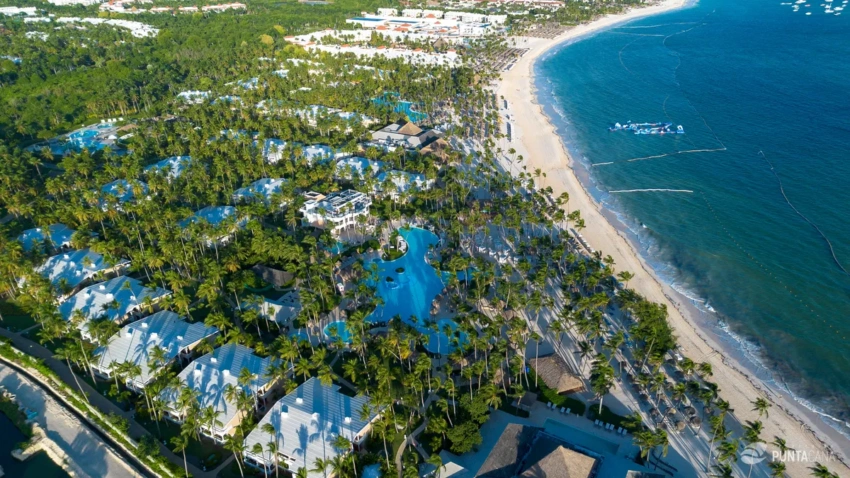
Aerial view of Punta Cana
Timing can be everything when it comes to minimizing motion sickness. In Punta Cana, weather conditions can significantly influence your experience. Calm seas are generally found early in the morning or later in the afternoon when winds are less intense. Additionally, opting for a day with clear skies can reduce the likelihood of rough waves on boat tours.
Another crucial factor is understanding the tidal patterns. Higher tides can mean choppier waters, so consulting local tide charts might be beneficial. Road trips, on the other hand, can be planned to avoid peak traffic hours, reducing stop-and-go motion that often triggers nausea.
2. Diet and Hydration Tips
What you consume before and during your travel can greatly impact your susceptibility to motion sickness. It’s advisable to avoid heavy, greasy, or spicy foods as they can exacerbate nausea. Instead, opt for light snacks such as crackers or dry toast. Ginger, in the form of tea or candy, is renowned for its anti-nausea properties and can be a handy travel companion.
Hydration is equally important. Dehydration can worsen symptoms, so keep a bottle of water handy. However, avoid excessive caffeine or alcohol, which can lead to dehydration and may amplify feelings of dizziness and nausea.
3. Using Acupressure and Other Natural Remedies
Natural remedies can be a soothing alternative for those seeking relief. Acupressure, an ancient technique, involves applying pressure to specific points on the body to alleviate symptoms. The Pericardium 6 (P6) point, located on the inner wrist, is well-known for its effectiveness in reducing nausea. Acupressure wristbands are readily available and can be an easy-to-use option for travelers.
Essential oils like peppermint and lavender are also popular choices. A few drops on a handkerchief can provide a calming aroma that helps ease unease. Herbal supplements such as chamomile and lemon balm can be taken as tea to promote relaxation and prevent motion discomfort.
Our Best Tours in Punta Cana
Ready to embark on a journey without the worry of motion sickness? Check out our curated tours that promise not just thrilling adventures but also a comfortable experience. Whether it’s a serene boat tour or a scenic road trip, we have options that cater to your needs.
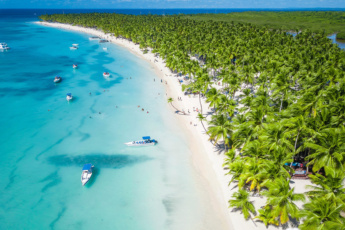
Saona Island Excursion - Caribbean Paradise
from $75 Read more
Swimming with Dolphins in Punta Cana - Top Adventure 2026 (50 minutes)
from $155 Read moreBy taking these preventive steps, you can focus on the breathtaking beauty of Punta Cana and create memories that last a lifetime, free from the worry of motion sickness.
On-the-Go Remedies and Solutions
Seasickness and motion sickness can transform an exciting adventure into a challenge, but don’t fret! With the right on-the-go remedies and solutions, you can enjoy your journey with ease and comfort. Whether you’re braving the waves or navigating scenic roads, these tips are your trusty travel companions.
1. Over-the-Counter and Prescription Medications
When it comes to tackling seasickness and motion sickness, medications can be a powerful ally. Over-the-counter options like dimenhydrinate (Dramamine) and meclizine (Bonine) are popular choices. These medications work by blocking the brain signals that trigger nausea and dizziness. However, it’s crucial to take them before symptoms kick in—ideally, 30 minutes to an hour before your journey.
For those who experience severe symptoms, prescription medications such as scopolamine patches may offer relief. These patches are worn behind the ear and provide continuous protection against motion sickness. Remember to consult with a healthcare professional to determine which medication is best for you, especially if you have other health conditions or are taking other medications.
2. Gadgets and Wearables
Thanks to modern technology, you can now combat motion sickness with innovative gadgets and wearables. One of the most intriguing devices is the anti-nausea wristband, which uses acupressure to alleviate symptoms. By applying gentle pressure to a specific point on the wrist, these bands can reduce nausea without the need for medication.
Another fascinating gadget is the motion sickness relief glasses. These glasses have a unique design that creates a horizon line, helping your brain make sense of conflicting signals between your eyes and inner ear. They’re a stylish and effective way to keep motion sickness at bay.
3. Breathing and Relaxation Techniques
Sometimes, the simplest solutions are the most effective. Breathing and relaxation techniques can be powerful tools in managing motion sickness. Deep breathing exercises, such as inhaling deeply through your nose and exhaling slowly through your mouth, can help calm your nervous system.
Additionally, progressive muscle relaxation, where you tense and then release different muscle groups, can reduce anxiety and physical tension. Pair these techniques with visualization exercises—imagine a serene beach in Punta Cana, with the waves gently lapping at your feet—and you’ll find yourself more relaxed and less susceptible to motion sickness.
With these remedies and solutions in your travel toolkit, you’re all set to conquer seasickness and motion sickness head-on. So go ahead, embrace the adventure, and let the stunning vistas of Punta Cana captivate your senses without the worry of discomfort.
Special Considerations for Boat Tours in Punta Cana
Embarking on a boat tour in Punta Cana can be a breathtaking experience, offering stunning views and a taste of adventure. However, for those prone to seasickness, a little preparation can go a long way in ensuring the trip is as enjoyable as it is memorable.
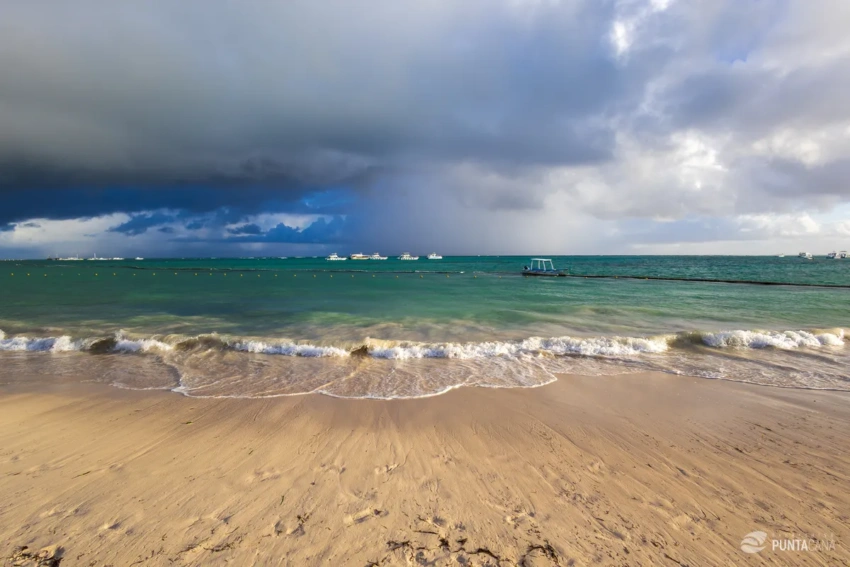
Punta Cana
1. Selecting the Best Tours for Motion Sensitivity
Choosing the right tour is crucial if you’re sensitive to motion. Punta Cana offers a variety of boat tours, from tranquil catamaran sails to more adventurous speedboat rides. Selecting a tour that aligns with your comfort level can make all the difference.
- Catamaran Cruises: Opt for catamaran tours, which are known for their stability and smooth sailing. These tours often provide a leisurely experience with plenty of time to relax and enjoy the scenery.
- Shorter Durations: Consider tours with shorter durations to reduce the time spent on the water, especially if you’re unsure how you’ll react. Many operators offer half-day options that are perfect for a quick ocean escape.
- Calmer Waters: Select tours that stay close to the coast or explore bays and lagoons where waters are typically calmer.
Our Best Tours in Punta Cana
If you’re ready to take the plunge and book a tour, check out our curated selection of boat excursions designed with motion-sensitive travelers in mind. From serene sunset sails to guided snorkeling adventures, there’s something for everyone.
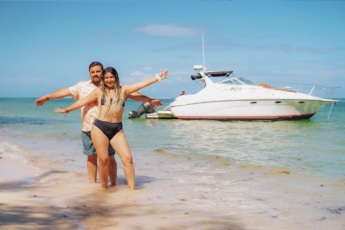
Punta Cana Private Boat Trip at the Best Price - 3-Hour Exclusive Tour with Snorkeling (from Jellyfish to Cabeza de Toro)
from $590 Read more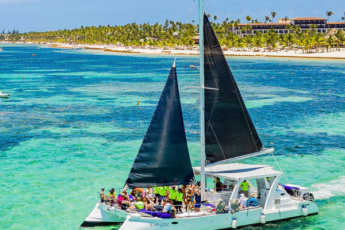
Power Cruise – Punta Cana Party Experience on the Bad Girl Catamaran
from $65 Read more2. Positioning and Seating on the Boat
Where you sit on the boat can significantly impact your experience. Finding the right spot can help mitigate the effects of motion and ensure a smoother ride.
- Midship Stability: The middle of the boat is the most stable area. Sitting here reduces the up-and-down motion felt at the front (bow) and the side-to-side sway at the back (stern).
- Lower Decks: If available, choose a seat on a lower deck. The higher you are, the more movement you’ll feel.
- Face Forward: Always sit facing forward. It helps your brain and body synchronize with the boat’s direction of travel, reducing disorientation.
3. Interacting with Crew and Guides
Don’t hesitate to communicate your needs to the crew and guides. They’re there to help and can offer accommodations to make your journey more comfortable.
- Notify Before Departure: Inform the crew of your motion sensitivity before the tour begins. They may adjust the itinerary or offer tips specific to the day’s conditions.
- Ask for Assistance: If you start feeling unwell, don’t be shy to ask for help. Crew members can provide water, recommend a better spot, or offer motion sickness remedies available onboard.
- Engage in Conversation: Sometimes, a friendly chat with the crew can be a great distraction from the motion. Plus, you might learn interesting facts about the area!
Punta Cana’s boat tours are an experience not to be missed, and with these tips, even the most motion-sensitive travelers can enjoy the stunning ocean vistas and vibrant marine life without the worry of seasickness spoiling the fun.
Managing Motion Sickness on Road Trips
Embarking on a scenic road trip through Punta Cana’s breathtaking landscapes is an adventure not to be missed. However, for those prone to motion sickness, the journey can be as daunting as it is delightful. Fear not, as there are effective strategies to ensure your road trip is as smooth as the rolling hills of the Dominican Republic.
1. Vehicle Selection and Seating Arrangements
Choosing the right vehicle can make a world of difference when it comes to managing motion sickness. Opt for a larger, more stable vehicle, like an SUV or a van, which tends to offer a steadier ride compared to smaller cars or buses. When it comes to seating, the front seat is typically the best choice for those susceptible to motion sickness. This position not only offers a clearer view of the road ahead but also reduces the perception of motion, which can exacerbate symptoms.
If you’re traveling with a group, politely request the front seat, explaining your sensitivity to motion. Most companions will be understanding and accommodating. Additionally, keeping the windows slightly open can provide fresh air, which often helps alleviate discomfort.
2. Route Planning and Breaks
Strategic planning of your route is a proactive way to combat motion sickness. Opt for routes with fewer twists and turns, as these can heighten the sensation of motion. The Dominican Republic’s coastal roads offer stunning views and tend to be more straightforward, providing a less jarring experience.
Taking regular breaks is essential, not only to stretch and refresh but also to recalibrate your senses. Frequent stops allow you to step outside, take deep breaths, and enjoy the scenery without the car’s movement. Aim for breaks every 30 to 60 minutes depending on your comfort level.
3. Engaging Distractions and Activities
Keeping your mind occupied is a powerful tool against motion sickness. Engaging activities can divert your attention away from the feeling of motion. Here are some strategies:
- Audiobooks and Podcasts: Immerse yourself in an exciting story or an interesting podcast. This form of entertainment doesn’t require visual focus, which can sometimes worsen motion sickness.
- Music Playlists: Create a playlist of your favorite tunes. Singing along not only lifts the spirits but also distracts the mind.
- Interactive Games: Engage in verbal games like ’20 Questions’ or ‘I Spy,’ which are great for family trips and keep everyone entertained without needing to look down.
Remember, adjusting your focus to the horizon can also help stabilize your inner equilibrium. While it might not always be possible, especially on winding roads, focusing on something stationary outside the vehicle can alleviate symptoms.
With these tips in hand, you’re ready to conquer the roads of Punta Cana with confidence. Don’t let motion sickness hold you back from exploring the hidden gems and majestic vistas that await you. Adventure is out there, and with the right preparation, it’s yours to seize!
Frequently Asked Questions
What causes motion sickness, and how can it affect my trip to Punta Cana?
Motion sickness occurs when there is a disconnect between what your eyes see and what your inner ear senses. This can happen on boats or during car rides. In Punta Cana, if you’re planning boat tours or road trips, the beautiful but sometimes bumpy rides can trigger motion sickness, causing symptoms like nausea, dizziness, and sweating.
What are some effective tips to prevent seasickness during boat tours in Punta Cana?
To prevent seasickness, try to stay on the deck where you can focus on the horizon, avoid reading or staring at screens, and sit in the middle of the boat where there is less motion. Eating light meals and avoiding alcohol before the trip can also help.
Are there any over-the-counter medications I can take to reduce motion sickness symptoms?
Yes, over-the-counter medications like dimenhydrinate (Dramamine) or meclizine (Bonine) can help alleviate symptoms of motion sickness. It’s best to take them about an hour before your trip for maximum effectiveness.
What natural remedies can help with motion sickness on road trips in Punta Cana?
Ginger, in forms like ginger tea or ginger candies, is known for its anti-nausea properties. Additionally, acupressure wristbands that apply pressure to the Nei-Kuan point on your wrist may provide relief without medication.
How can I manage motion sickness in children during a long car ride in Punta Cana?
For children, ensure they have a clear view out the window, encourage them to focus on distant scenery, and play games that involve looking outside. Taking breaks and allowing them to get fresh air can also help.
Can certain foods or drinks worsen motion sickness symptoms during a trip?
Yes, consuming heavy, greasy, or spicy foods before traveling can worsen symptoms. It’s better to eat light, bland meals and stay hydrated with water. Avoiding alcohol and caffeinated beverages is also recommended.
Are there any specific spots on a boat where motion sickness is less likely to occur?
Yes, sitting in the middle of the boat, close to the waterline, can minimize the feeling of motion. This area experiences less rocking compared to the front or back of the boat.
What should I do if I start feeling seasick or motion sick during my trip?
If you start feeling sick, try to get fresh air, focus on a stable point on the horizon, and stay hydrated. Resting in a semi-reclined position and applying cool cloths to your forehead can also help.
Is there a risk of severe symptoms from motion sickness that require medical attention?
While motion sickness is generally not serious, if symptoms are severe or persistent, it’s advisable to seek medical attention. Symptoms like excessive vomiting and dehydration need to be addressed promptly.
If symptoms are severe or unusual, consult a healthcare professional for appropriate advice. This information might not cover all aspects of your condition.
